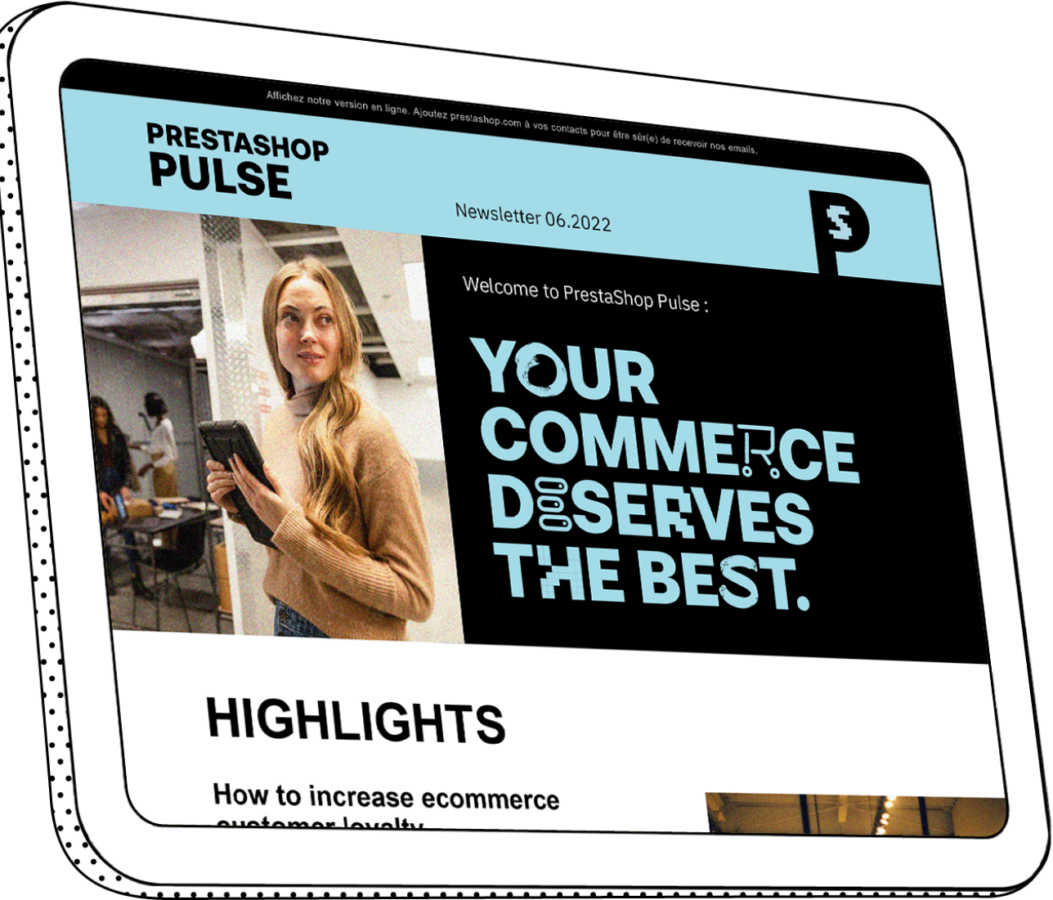
E-commerce: The KPIs you should monitor
Data is the most valuable source of information to help you maximise your e-commerce conversions. Most e-commerce today have access to data nowadays, but few are able to correctly interpret it and use it as a key to business success.
Key Performance Indicators (KPIs) are your best resource to easily measure the impact of your sales and marketing activities. Whether you want to get to know your customers better, maximise conversions or increase the value of your offer, there's only one thing you need to do: read (and understand) the right metrics.
Here are the 5 most important KPIs to always keep in mind if you really want to get your online shop up and running.
Top 5 KPIs for e-commerce
E-commerce KPIs represent all the metrics that help us monitor business performance. Learning to identify and understand the right ones will help you rethink what's not working out and accelerate you towards achieving your goals.
Getting to know KPIs is useful because:
- In the words of Peter Drucker "What gets measured can be improved". Reading the data is just what you need to know if things are going well, if your goals are being achieved and if you need to modify or rethink your processes. How can you be sure that your e-commerce is working correctly if you don't have any numbers to measure?
- Keep a close eye on how your business is developing. Defining the direction is not enough: you'll have to figure out how to stay on course. Having objective reference numbers will help you manage your development process
Now let's take a look at the 5 most important KPIs for managing an ecommerce.
#1 - Customer Acquisition Cost (CAC)
CAC stands for Customer Acquisition Cost, which in simple terms means the cost of acquiring a customer. This KPI is particularly important because it indicates the investment required to acquire a new client.
In mathematical terms, we can calculate CAC by following this formula:
Total cost of acquiring customers ÷ No. of customers acquired = Customer Acquisition Cost (CAC)
Let's give you an example. Imagine you have invested 1,000 euros in marketing activities for your e-commerce, which has gained you 50 new customers. That would mean your CAC is 20 euros.
What if you find that your CAC is too high? If you're overspending to acquire new customers, look at the detail of your data and determine which acquisition channels are best for you. You may, for example, realise that Facebook advertising campaigns generate customers at a lower cost than LinkedIn. Based on these considerations, you can remodel your budget and rethink your investments.
#2 - Lifetime Value (LTV)
Lifetime Value (LTV) is another very important KPI for your e-commerce. This is the average value that your client brings to your business throughout your entire business relationship. In other words, once you have calculated the CAC, you will need to understand how much this customer is "worth" over time, i.e. how many times they contribute to the growth of your business by taking an action (which, more specifically, means purchasing your products).
This KPI is particularly useful to understand how effective your loyalty schemes really are. According to E-consultancy statistics, increasing your customer retention by 5% can increase your company's profits by 25-95%. But you should also bear in mind that acquiring new customers is 5 to 25 times more expensive than maintaining existing ones. That's why, if you want to grow your business, you'll need to stretch LTV as much as possible.
To calculate the LTV, you will need to use this formula, which involves calculating other metrics such as AOV (which we will see in the next paragraph).
(Average value of the AOV order) x (Average number of times the customer purchases each year) x (Average customer loyalty time in months or years) = Customer Lifetime Value
EXTRA TIPS: There are many ways to improve the relationship with your customer, both before and after they have made a purchase. This will allow you to build customer loyalty and improve your customer's shopping experience. The PrestaShop addons for improved customer relationships can definitely help you out in this process ;)
#3 - Average order value (AOV)
The average order value, also known as AOV shows, on average, how much each customer spends on each purchase. This is a key KPI for both online and physical stores and helps you understand which strategies you need to implement to increase your customer's average spend in each transaction.
To calculate your AOV over a given period of time,simply use this formula:
Total revenues ÷ Total number of orders = Average Order Value (AOV)
To increase your AOV, you can apply a range of strategies to maximise each customer's spending on each order. One of the best strategies would be to offer a discount (e.g. 3for2) or a particular bonus (e.g. free shipping) for orders over a certain amount, which is usually higher than your current AOV. By doing so, you can encourage the customer to spend more by offering a unique opportunity and, at the same time, increase your AOV.
#4 - Conversion Rate (CR)
The Conversion Rate (CR) establishes the ability of e-commerce to transform visitors into buyers. This KPI helps to determine the value of your traffic and how much visitors are then inclined to make a conversion which, in this case, is a purchase.
To calculate your CR, simply apply this formula:
(Number of orders placed) ÷ (Number of visits) x 100
But how do you know if your conversion rate is high or low? Here is an interesting fact: according to a Monetate report, the average worldwide e-commerce CR is between 2.89 and 3.31%
#5 - Number of abandoned baskets
We finish with one of the most important KPIs that you need to measure to optimise your online shop: the shopping basket abandonment rate. This refers to when a potential customer visits your site, adds items to the shopping basket and then, during checkout, decides not to buy from your store.
This scenario, unfortunately, is very common: according to the Baymard Institute, the average shopping basket abandonment rate of an e-commerce is around 70%. Yep, that's roughly 3 out of 4 baskets.
But what are the reasons for this? The Baymard Institute has provided an answer to this question, and these are the most common reasons:
- High shipping costs (55%)
- The need to create an account (34%)
- Long or complicated checkout process (26%)
- They do not trust the site with their credit card details (17%)
- Website went wrong/crash (17%)
- Not enough payment options (6%)
Are you monitoring these KPIs yet? Tell us about your experience in the comments





